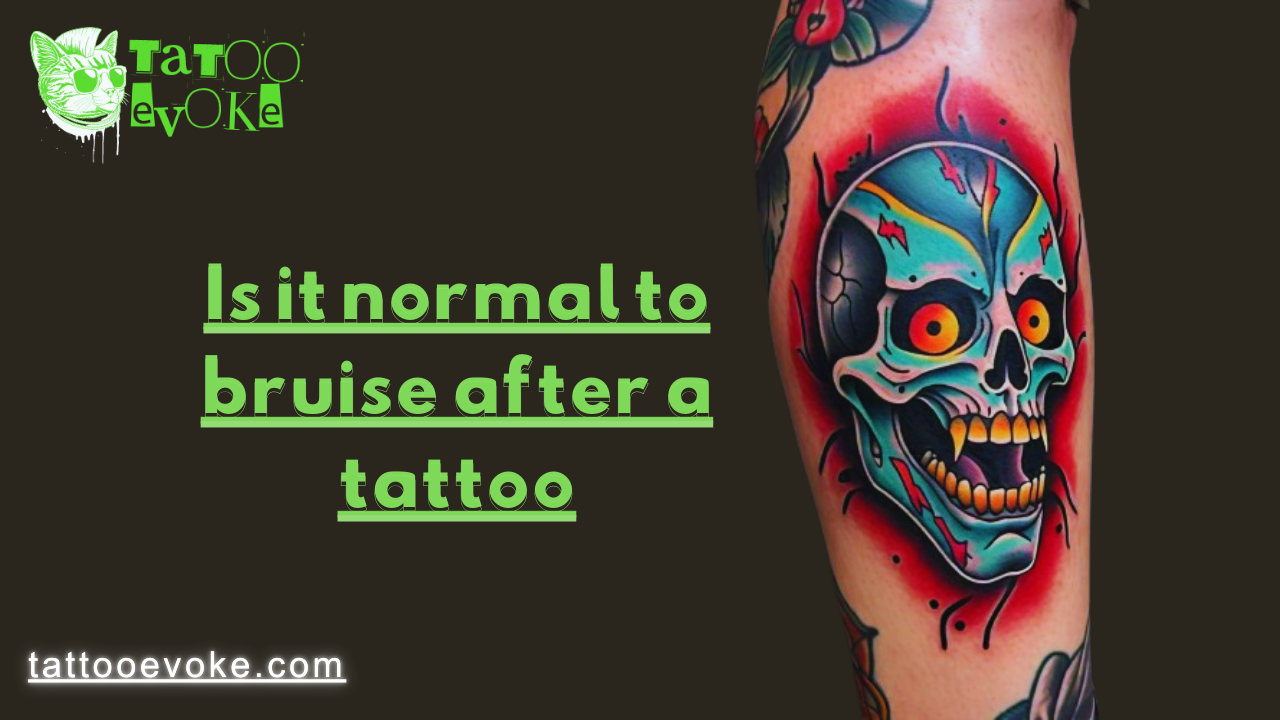Introduction
Brief Overview of Bruising After Getting a Tattoo
Going through the tattoo process can be a great journey. But most people doubt “Is it normal to bruise after a tattoo?” The simple answer is yes since bruising can be a common side effect. When the tattoo needle cuts your skin frequently, it can cause small bleeding from your vessels. This is especially true if your skin is sensitive or if the tattoo is done on a special, dedicated area of your body.
Importance of Understanding Bruising
Understanding “why bruising happens” is necessary because it helps you choose the right approach to your current tattoo care. Knowing “what’s normal and what’s not” can help relax your mind and ensure your tattoo heals properly. By learning about the reasons and how to manage bruising, you can avoid unnecessary anxiety and take better care of your tattoo.
Understanding Bruises
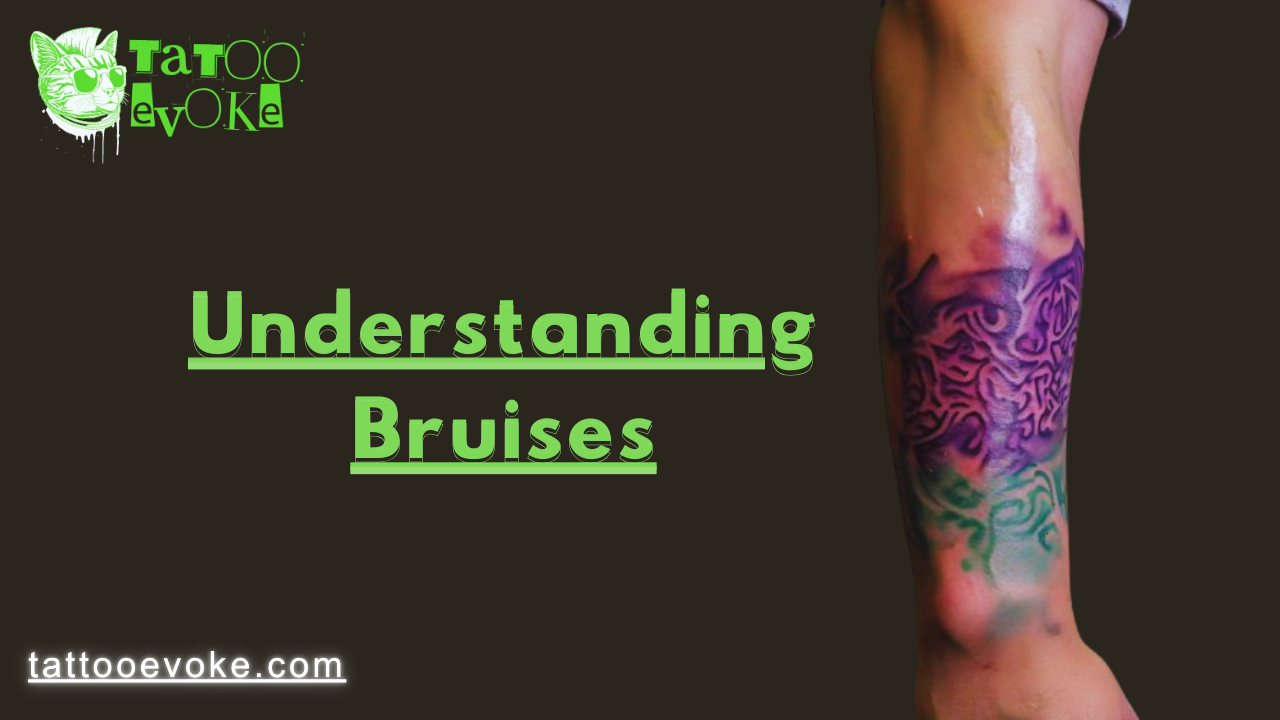
What is a Bruise (Ecchymosis )?
A bruise (Exxhymosis) is simply a blue or purple mark on your skin that occurs when blood vessels are damaged due to an injury. This blood stocks under the skin and creates a black or blue mark. It’s a natural response from your body to injury, and it’s usually risk-free, even though it might look fairly disturbing.
How Do Bruises Form?
Bruises form when something or any object hits or presses on your skin strong enough to break those small blood vessels but not create a cut. Then blood stocks under the skin and changes the skin color. Within a time, your body will take back the blood, and the bruise will disappeared. This is the same, even if the bruise is from a bump, a fall, or even getting a tattoo.
Factors Influencing Bruising
Common Causes of Bruising
Bruising can happen for various reasons, and some people are more likely to it than others. Understanding what causes bruising can help you manage and avoid it, especially after getting a tattoo.
- Age
As we age, our skin becomes thinner, and our blood vessels become more fragile. This makes bruising more common and sometimes more noticeable. - Medications
Certain medications, like blood thinners or aspirin, can make you bruise more easily because they affect how your blood clots. - Family History
If bruising runs in your family, you might be genetically predisposed to bruise more easily. It’s just part of your DNA.
Sun Exposure
Excessive sun exposure can weaken your skin, making it more likely to bruise, especially in areas frequently exposed to the sun.
Dietary Supplements
Some supplements, like fish oil or ginkgo biloba, can thin your blood slightly, increasing the chances of bruising.
Vitamin Deficiencies
A lack of certain vitamins, particularly Vitamin C and Vitamin K, can lead to more frequent bruising, as these vitamins are essential for skin and blood vessel health.
Extreme Exercise
Intense physical activity can cause bruising, especially if you’re lifting heavy weights or engaging in contact sports. The strain can cause small blood vessels to break.
Underlying Health Conditions
Conditions like diabetes or blood disorders can make you more susceptible to bruising. These conditions affect how your body heals and how well your blood clots.
Lifestyle Factors
Habits like drinking alcohol can increase the likelihood of bruising. Alcohol can thin the blood, making bruises more likely and more noticeable.
Bruising After a Tattoo
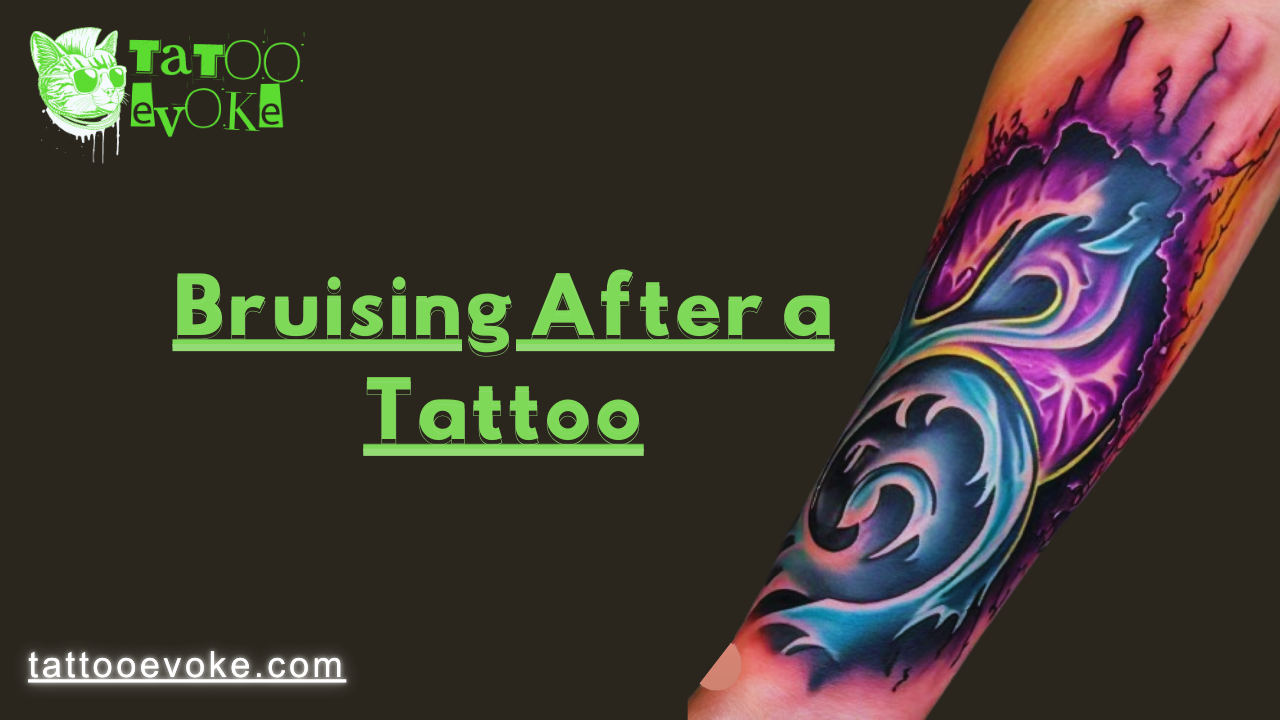
Is Bruising Normal After Getting a Tattoo?
Yes, bruising is normal after getting a tattoo. The tattooing process involves repeatedly puncturing the skin with needles, which can cause small blood vessels to break and lead to bruising. While it’s not unusual to see some bruising, it’s typically mild and should fade as your skin heals.Following proper tattoo aftercare, as recommended by dermatologists, can help minimize bruising and ensure your tattoo heals smoothly.”
How Does Tattooing Cause Bruising?
Tattooing causes bruising because the needles penetrate the skin’s surface and impact tiny blood vessels underneath. This can disrupt blood flow and result in bruises. The intensity of the bruising can vary based on the tattoo’s size, placement, and your skin’s sensitivity.
Types of Bruises
Different Types of Bruises
Bruises can vary based on their cause and appearance. Here are the main types:
Contusions: These are the most common type of bruise, usually resulting from a direct impact or trauma. They appear as a discolored patch on the skin and can range in color from red to purple as they heal.
Hematomas: A hematoma occurs when a larger amount of blood collects outside of blood vessels, creating a swollen, painful area. This type of bruise is often more noticeable and may take longer to heal compared to a standard contusion.
Petechiae: These are tiny, flat red or purple spots that can appear on the skin due to broken blood vessels. Petechiae are often a sign of a more serious underlying condition, especially if they appear without obvious trauma.
Common Locations for Bruises
Bruises can show up anywhere on the body, but some spots are more prone to bruising:
Arms and Legs: These areas are frequently exposed and more likely to experience bumps or knocks, making them common locations for bruises.
Torso: The sides of the torso and abdomen can bruise from direct impacts or pressure, especially if you’re leaning against something or being touched hard.
Around the Tattoo Area: After getting a tattoo, bruises may appear near the tattooed area or on parts of your body that were pressed or manipulated during the tattooing process.
Bruise Stages
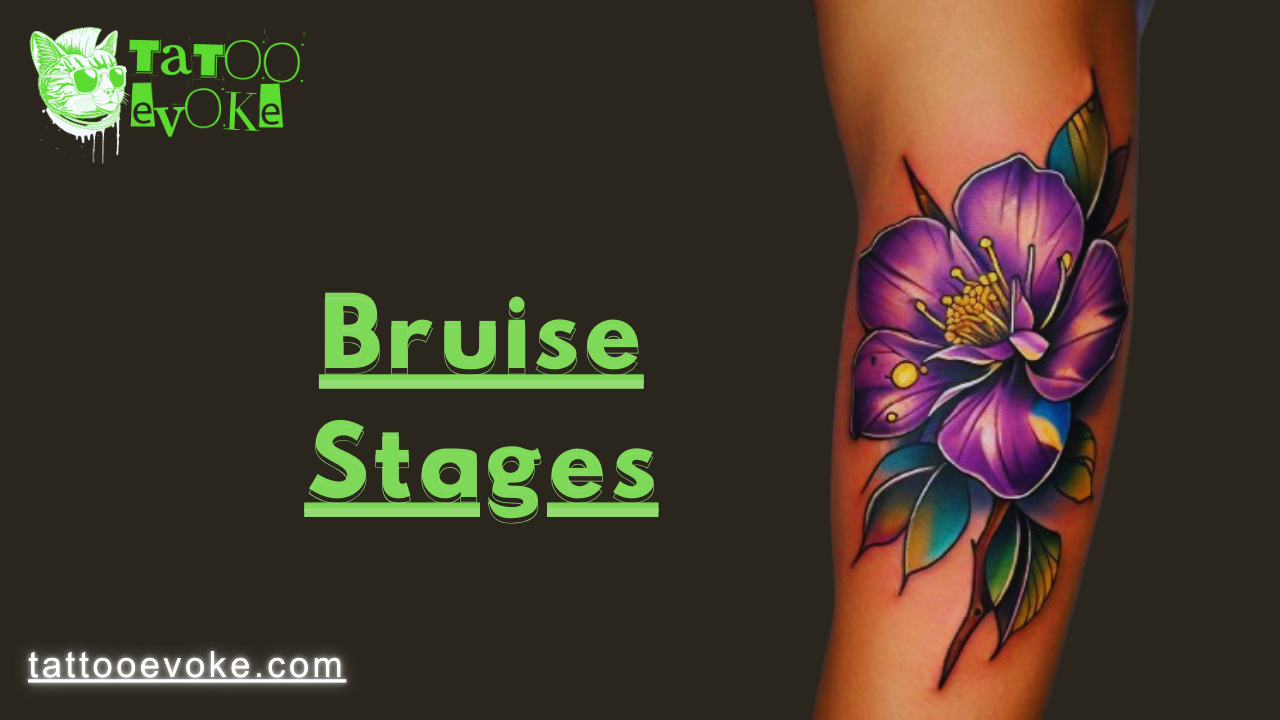
Overview of Bruise Progression
Bruises change color as they heal, which is a normal part of the healing process. The color changes occur as your body breaks down and reabsorbs the blood trapped under your skin.
Stages of Bruise Healing
Red or Purple: Right after the injury, your bruise will likely be red or purple due to fresh blood under the skin.
Blue or Dark Purple: A day or two later, the bruise often turns blue or dark purple as the blood begins to lose oxygen.
Green or Yellow: After about five to ten days, the bruise may turn green or yellow as the blood starts to break down further.
Yellow or Light Brown: Finally, the bruise fades to a yellow or light brown color before disappearing completely.
When to Seek Medical Attention
Signs That Require Medical Evaluation
While most bruises are harmless and heal on their own, some signs indicate you should see a doctor. If your bruise is unusually large, very painful, or if you notice frequent bruising without any obvious cause, it’s worth getting checked out. Other red flags include bruises that don’t heal after a couple of weeks, bruises that appear suddenly without any injury, or if you experience bleeding from your gums or nose along with the bruising.
Tests and Examinations for Unusual Bruising
If your bruising seems out of the ordinary, a doctor might perform tests to figure out what’s going on. They could start with a blood test to check for issues like anemia, clotting problems, or vitamin deficiencies. In some cases, they might suggest imaging tests, like an ultrasound, to look at the underlying tissues. These tests help identify any serious conditions that might be causing your bruising, so you can get the right treatment.
Managing and Treating Bruises
Home Remedies and Treatments
Cold Compress:
- Apply a cold compress to the bruised area immediately after injury.
- Reduces swelling and prevents the bruise from worsening.
Elevation:
- Keep the bruised area elevated.
- Helps minimize blood flow to the area, reducing the size of the bruise.
Pain Relief:
- Use over-the-counter pain relievers like acetaminophen for discomfort.
- Avoid aspirin, as it can thin the blood and worsen the bruise.
Arnica Gel/Cream:
- Apply arnica gel or cream to the bruise.
- Popular remedy believed to speed up the healing process.
- Professional Treatments and When to Seek Them
When to See a Doctor:
- If the bruise is large, painful, or doesn’t heal after two weeks.
- If bruising occurs frequently without obvious cause.
Potential Underlying Conditions:
- Bruising might indicate a blood clotting disorder or vitamin deficiency.
- A doctor may perform tests to identify any serious conditions.
Medical Interventions:
- Prescription medications may be recommended.
- In rare cases, a hematoma may need to be drained by a healthcare professional to relieve pressure and aid in healing.
Preventing Bruises
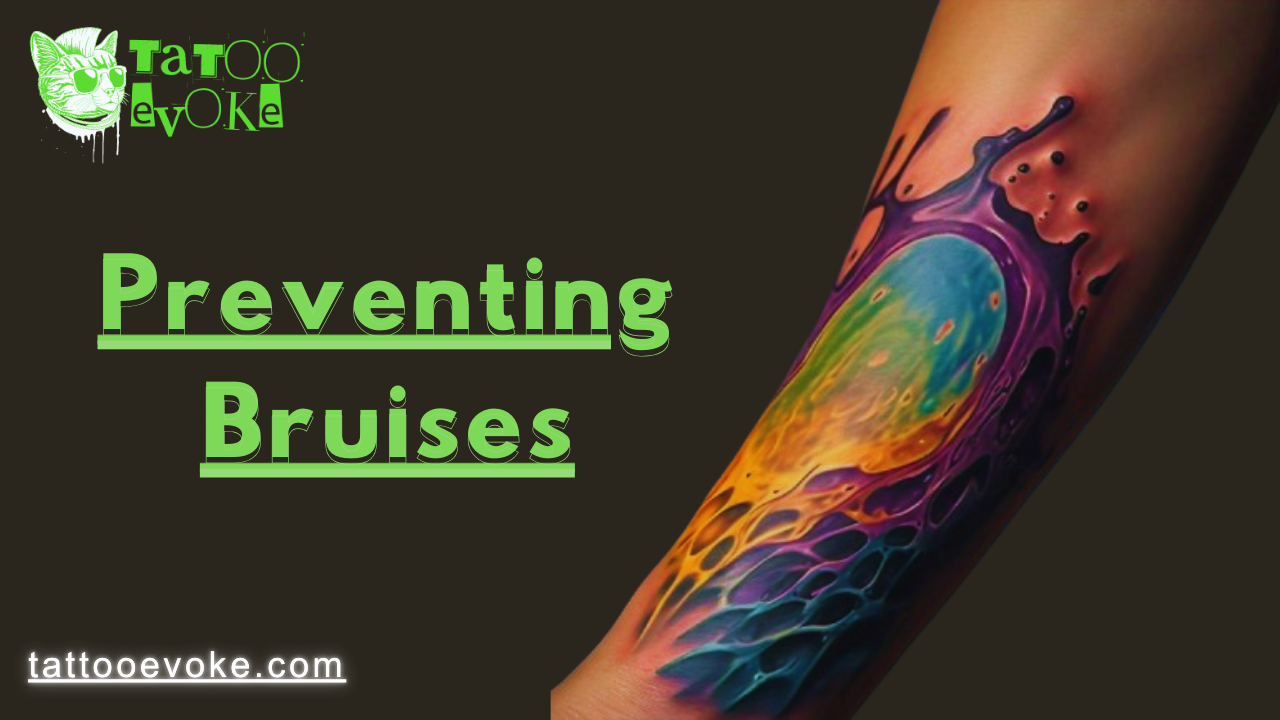
Tips for Minimizing Bruising Risk
Be Gentle with Your Skin:
- Avoid bumping into hard surfaces or putting too much pressure on your skin, especially if you bruise easily.
Wear Protective Gear:
- If you’re engaging in activities that could cause injury, like sports, wear appropriate protective gear to shield your skin from impact.
Stay Hydrated and Nourished:
- Keeping your skin healthy with proper hydration and a balanced diet can strengthen it and make it less prone to bruising.
Boost Vitamin Intake:
- Ensure you’re getting enough Vitamin C and Vitamin K, as these are essential for skin and blood vessel health. Consider supplements if necessary.
Be Cautious with Medications:
- If you’re on blood thinners or other medications that affect clotting, talk to your doctor about ways to minimize bruising.
Use Sunscreen:
- Protect your skin from sun damage, which can make it more fragile and prone to bruising.
Conclusion
Is it normal to bruise after a tattoo? In this article, we’ve explored the topic of bruising after getting a tattoo, covering everything from what bruises are and how they form to the factors that influence bruising. We also discussed whether it’s normal to bruise after a tattoo, the different types of bruises, and the stages they go through as they heal. Additionally, we touched on when to seek medical attention for unusual bruising, effective home remedies, and professional treatments. Finally, we offered tips on how to prevent bruises from occurring in the first place. Understanding these aspects helps ensure that your tattoo heals properly and gives you peace of mind throughout the process.
FAQs
Why did I bruise after getting a tattoo?
Bruising after a tattoo is usually due to needle pressure breaking small blood vessels beneath the skin. It's a normal reaction for some people and should fade in a few days.
How to tell if a tattoo is bruised or infected?
A bruised tattoo will show discoloration and mild swelling, typically fading over time. An infected tattoo may have persistent redness, increased pain, pus, or a foul odor.
What does a blowout tattoo look like?
A tattoo blowout appears as blurred, fuzzy, or smeared ink, spreading beyond the intended design, often looking like a bruise or shadow under the skin.
Is it normal for tattoo removal to bruise?
Yes, bruising after tattoo removal is normal as the laser treatment can cause blood vessels to break, leading to temporary bruising and swelling.
Explore More: Related Article
7 Reasons Why is CeraVe Lotion Good for Tattoos : Expert Insights
